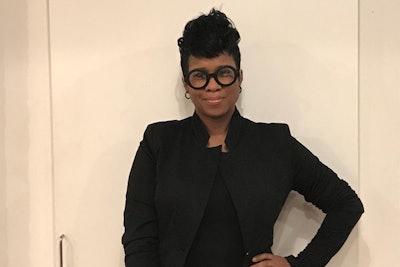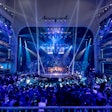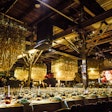
Rachel Young is a producer for LDJ Productions, a full-service technical production, creative services, show direction, and event management company. Young has spent the last eight years running backstage- and show-staffing, as well as casting and wardrobe management, for high-end events such as New York Fashion Week, SwimMiami, Men's Fashion Week, and more. In addition to fashion, she handles show direction for several brands under the L’Oreal umbrella. She is based in New York City.
1. Plan, plan, and then plan some more. Pre-production is the most important part of any event, be it a fashion show, a two-day conference, or a two-hour corporate meeting. During this time, whether it’s a week or six months, get your team on the same page and take it step-by-step. Begin with solid research and curate your top-choice venues, conduct site visits, and plot out the vendors you will need.
Be aware of what you need to get done, and be realistic and transparent with clients on short turnaround times. The worst thing you can do is over-promise and under-deliver. I find it extremely helpful to figure out in advance what approvals you will need, and who will be signing off on those decisions. Clear communication with clients on all aspects of an event helps streamline what can often be a very logistically complicated project.
2. Know your audience and manage your time. The guest experience is the key to a successful event, and that begins the moment a project begins. It’s important to set up time goals for the event itself, and think about the message that needs to come across within that time frame. For a corporate event, it may be about impressing internal clients and employees with a clear, concise presentation, whereas a fashion show is about exterior customers and the media.
[PULLQUOTE]
3. Get the most bang for your buck. Before you begin to build a budget, it’s important to understand your client’s end goals and priorities. Try and divide a budget so that more resources are put toward items that are audience-facing and that directly affect the guest experience. I have found that budgets are more and more challenging, and it helps to put all elements into a budget and divide by “nice-to-have” versus “must-have."
For example, if atmosphere and an overall look is what you’re after, then your venue choice is a high priority and should be accounted for before anything else. Focus on finding a place that has a built-in feel or vibe aligned with your desired look, and where it won’t require as much to enhance the aesthetic. Don’t pick the sleek white box for an event with a goal of vintage and rustic.
4. Assign clear roles for staff and promote learning. Any event, at any scale, needs to be a team effort. Designate roles early on for your entire team, so that objectives and deadlines are clear from Day 1. Look for staffers who are motivated by challenges, willing to collaborate, and open to sharing knowledge.
Mentor relationships are a huge part of the event world: We want the production assistant to shadow the director and not only understand the role, but strive for it. A staff that feels supported, understands objectives, and is motivated to perform translates to a world-class event.
5. Pay attention to finishing details. A successful event often comes down to those last details that should always be thought about ahead of time. A live show or event means you never get a second chance and the execution must be perfect every time. Think through every possible detail so that when you are onsite you can deal with all of the surprises that will happen.
The event world can often be a chaotic environment. Your job is to be the calm in the storm; it’s the key to a successful event and a happy client.



















